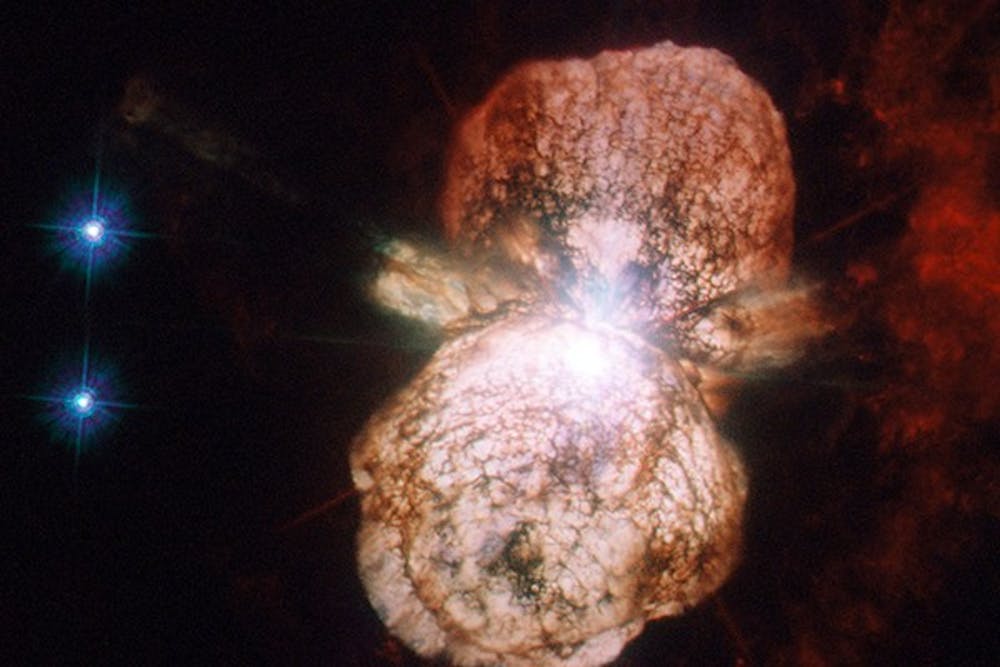 ASU astrophysicists will study how elements are synthesized inside of stars like Eta Carinae, pictured here.
ASU astrophysicists will study how elements are synthesized inside of stars like Eta Carinae, pictured here.(Photo Courtesy of Frank Timmes)
The creation and expansion of the periodic table is a conundrum that has puzzled scientists for generations, but it is one that a group of astrophysicists at ASU are going to try to solve with the help of a $1 million, five-year research grant from the National Science Foundation.
School of Earth and Space Exploration Professor Frank Timmes, who is a lead researcher on the NSF-funded project, said the Big Bang created three basic elements more than 13 billion years ago, but a lot of mystery still shrouds the synthesis of the rest of the periodic table.
More than 100 elements have evolved from the hydrogen, helium and lithium initially created by the Big Bang, Timmes said, and he and his colleagues have accepted the task of finding out exactly how, when and where in the universe this elemental evolution took place.
“How do you get the first carbon atom, and where was the first carbon atom in the universe made?” asked Timmes. “What about the first nitrogen atom? How and where was that made? How did it start out with absolutely nothing and end up with the periodic table of elements, which creates planets and people and so many other good things?”
These are the questions that he and his co-researchers funded under the NSF grant hope to answer.
Collaborating with other research teams around the country, Timmes said he and his team at ASU plan to use a combination of on-Earth experiments and outer space observations to explain the birth of elements in the early universe.
By observing the light spectrums emitted by stars in the Milky Way through telescopes, Timmes said they would be able to determine their elemental compositions, and experiments done in atom-accelerating machines will give him and his colleagues clues about how different elements are born in and dispersed by stars.
They will synthesize the information they collect in order to create models of the early universe.
Sumner Starrfield, a computational astrophysicist and professor in the School of Earth and Space Exploration who is also working on the project, said the research will yield amazing results in the future, but he said it was impossible to make specific predictions.
“You can’t predict a discovery,” he said. “We’ve made lots of discoveries over the years, but there’s no way for me to tell you what we’re going to discover next month. I’m hoping that our observations will turn up some interesting things though.”
As for the “usefulness” of the research, researcher and Earth and Space Exploration Professor Evan Scannapieco said the average person probably wouldn’t see it change their lives in any way.
He said although it might not lead to technological innovation “like a new kind of car or something,” which would attract a lot of attention from the general public, it would surely help to satisfy the curiosity of those interested in their origins.
“This particular project will help to answer questions like, ‘Why are we here?’ and ‘How did we come to be?’” Scannapieco said. “These are questions everyone really wants to know the answers to, I think.”
Scannapieco said stars are the reason anything exists.
“There would have been no Earth, no you and me, no anything without stars,” he said. “Aside from hydrogen, helium and little bit of lithium, stars made everything.”
Reach the reporter at megann.phillips@asu.edu or follow her on Twitter @megannphillips




